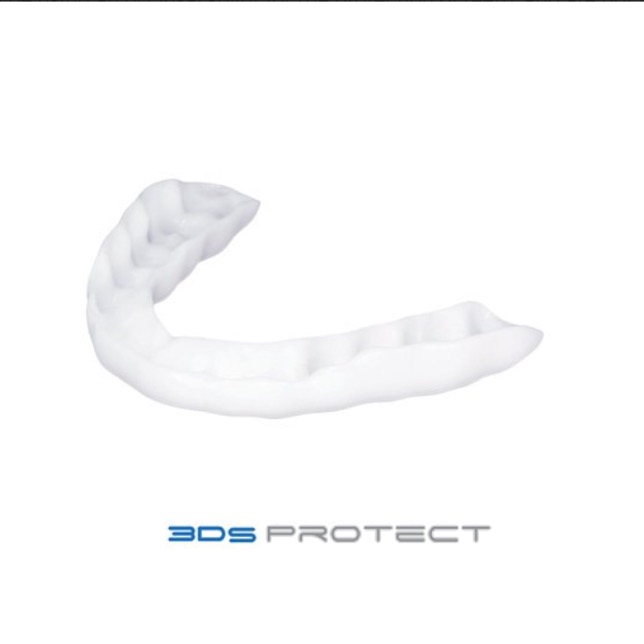The Covid Grind – Treatments – Part 2 – Appliances
There is only so much adjusting you can do. There comes a point where an appliance is needed to protect yourself from yourself. What’s great about these appliances is they are non-invasive.
We need to take models and a bite record and the appliances are fitted. There is, however, an important adjustment period to fine tune the function of the appliance.
Occlusal Splints
This is the main appliance to protect against serious Covid Grind. This is an appliance that is made to fit over the biting surfaces on either the upper or lower teeth. It is usually a firm acrylic removable bite plate, that acts as a protective guard over the teeth (usually in the upper jaw).
The splint provides an even bite and ensures the load is spread over all the teeth. This relieves the jaw’s muscles and reduces pain. The jaw joints, in turn, benefits from the reduced workload.
The splint is also used to protect against excessive Covid grinding, or bruxing of teeth. This often leads to cracked teeth and fillings, even crowns. Sometimes teeth split and have to be removed. The splint greatly reduces this continual trauma to the teeth, muscles and jaw joints. Even with crowns placed on teeth, cracks can still occur beneath!
There is a new technology to 3D print an occlusal splint out of nylon. It is much thinner than the acrylic appliance. It is a white colour rather than the transparent acrylic material.

Always bring the occlusal splint when visiting the dentist so that it can be check that the bite on it is still even and it function well. Also, if there is any treatment is to be done, such as a filling, the splint has to be checked that it still fits and the bite on it remains even.
Always wear the splint otherwise the teeth may move slightly and after a couple of days it will start to not fit properly. If for some reason, such as sickness, you can’t wear the splint, then at least for a minute EACH day, put the splint in and bite firmly and then remove it. This will ensure the teeth don’t move.
A side benefit of the occlusal splint is that it stops the teeth from moving and ensures a stable arch on which it is sitting on. This it does by in directly “splinting” the teeth together and acting like an orthodontic retainer.
It’s important to clean the appliance and keep it moist when not in use otherwise it will change shape. The 3D printed nylon does not need to be kept moist.
Snoring or Sleep Apnoea Device
This device must be made on the request from a specialist sleep physician. It is provided with appropriate dental supervision of a removable (jaw) oral appliance to assist in the treatment of assessed snoring and obstructive sleep apnoea disorders.
The appliances function by advancing the lower jaw forward and is made of acrylic and has attachments to hold the jaw forward. This opens the airway. It’s also called a Mandibular Advancement Device (MAD).

There are a now a 3D Printed Nylon Appliances for Snoring and Sleep Apnoea. The appliance is fitted over the teeth both jaws and it opens the airways by advancing the lower jaw forward. However, there is no attachment to each jaw section of the appliance. It has three settings in advancing the lower jaw.
A lot of grinding occurs with snoring and sleep apnoea, so the device stops grinding of teeth as well as snoring and opening the airway.

Please Note: SNORING OR SLEEP APNOEA
This is a condition that can be potentially life threatening. Children in particular should not be snoring. Proper medical investigations should be carried out as to the causes of snoring. Sleep apnoea can lead to obstruction of the airway and is common in overweight people. Other side effects are grinding of the teeth. Again, there are many causes of sleep apnoea and snoring, including inflamed anatomical structures in the sinuses or throat, medication, fatty tissue, postural issues, and so on. It is complex and serious.
SEEK ADVICE!
Need an Appointment?
If you’d like to book an appointment with the dentist at Seymour Dental then call us in Dulwich Hill, Sydney on (02) 9564 2397 or
contact us
Next week
Care of 3D Printed Nylon Appliances